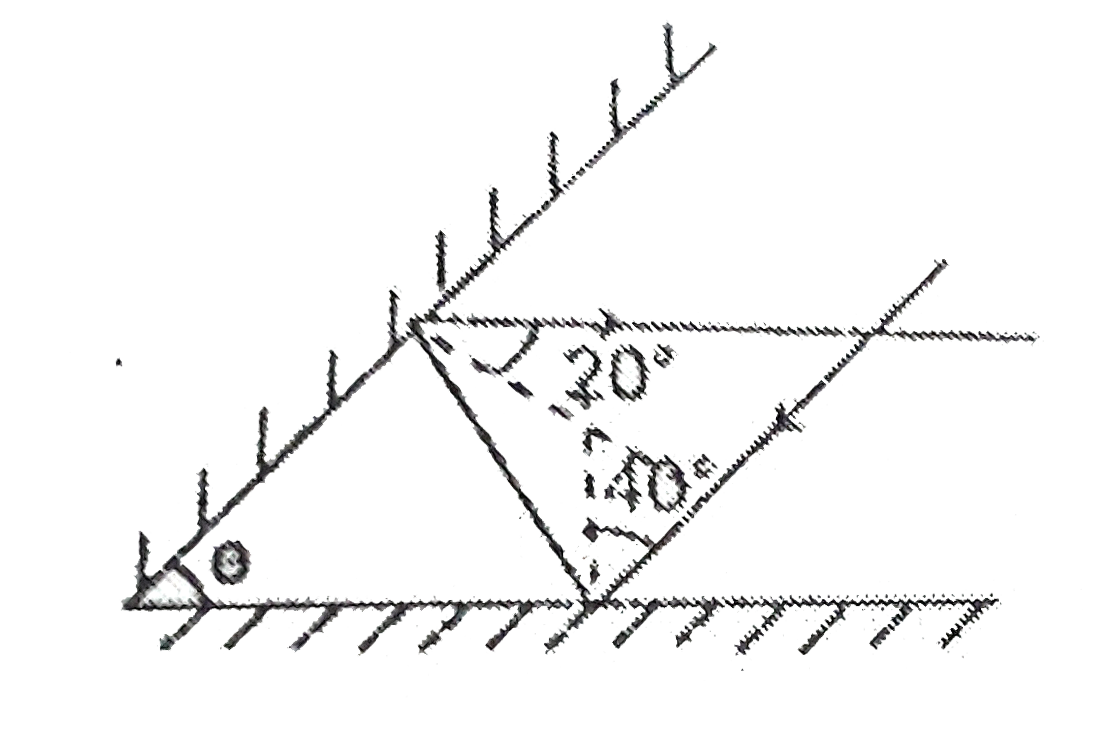Srikar focussed separately on two objects of different sizes using a photographic camera. He found that the sizes of the images of the two objects, one kept at a distance of 200 m and the other at a distance of 2 m is the same. How did he achieve this? Explain.
To solve the problem, we need to understand how Srikar was able to achieve the same size of images for two objects placed at different distances from the camera. Let's break it down step by step.
Step 1: Understanding the Given Information
- Object 1 is placed at a distance U1=200m.
- Object 2 is placed at a distance U2=2m.
- The sizes of the images of both objects are the same.
Step 2: Magnification Formula
The magnification M of an object in a camera is given by the formula:
M=HIHO=VU
where:
- HI = height of the image
- HO = height of the object
- V = distance of the image from the lens
- U = distance of the object from the lens
Step 3: Setting Up the Equations
For Object 1:
M1=HI1HO1=V200
For Object 2:
M2=HI2HO2=V2
Step 4: Equating the Magnifications
Since the sizes of the images are the same, we can say:
HI1=HI2
Thus, we can equate the magnifications:
HI1HO1=HI2HO2
Step 5: Substituting the Magnification Equations
Substituting the equations for magnification:
V200⋅HO2HI2=V2⋅HO1HI1
Step 6: Canceling Out Common Terms
Since HI1=HI2 and V is common in both equations, we can simplify:
HO2200=HO12
Step 7: Rearranging the Equation
Cross-multiplying gives us:
HO2⋅2=HO1⋅200
This simplifies to:
HO1=100⋅HO2
Conclusion
This means that the height of the first object is 100 times the height of the second object. Therefore, Srikar achieved the same size of images by using a much larger object (100 times larger) at a greater distance (200 m) compared to the smaller object (at 2 m).
---
- Object 1 is placed at a distance U1=200m.
- Object 2 is placed at a distance U2=2m.
- The sizes of the images of both objects are the same.
The magnification M of an object in a camera is given by the formula:
M=HIHO=VU
where:
- HI = height of the image
- HO = height of the object
- V = distance of the image from the lens
- U = distance of the object from the lens
For Object 1:
M1=HI1HO1=V200
For Object 2:
M2=HI2HO2=V2
Since the sizes of the images are the same, we can say:
HI1=HI2
Thus, we can equate the magnifications:
HI1HO1=HI2HO2
Substituting the equations for magnification:
V200⋅HO2HI2=V2⋅HO1HI1
Since HI1=HI2 and V is common in both equations, we can simplify:
HO2200=HO12
Cross-multiplying gives us:
HO2⋅2=HO1⋅200
This simplifies to:
HO1=100⋅HO2
This means that the height of the first object is 100 times the height of the second object. Therefore, Srikar achieved the same size of images by using a much larger object (100 times larger) at a greater distance (200 m) compared to the smaller object (at 2 m).
Topper's Solved these Questions
- LIGHTBOOK - PEARSON IIT JEE FOUNDATIONCHAPTER - LIGHTEXERCISE - Concept Application (Level 3)
15 Videos
- LIGHTBOOK - PEARSON IIT JEE FOUNDATIONCHAPTER - LIGHTEXERCISE - SOLVED EXAMPLE
43 Videos
- LIGHTBOOK - PEARSON IIT JEE FOUNDATIONCHAPTER - LIGHTEXERCISE - Concept Application (Level 1)
30 Videos
- KINEMATICS BOOK - PEARSON IIT JEE FOUNDATIONCHAPTER - KINEMATICS EXERCISE - CONCEPT APPLICATION (Level 3) (Application Based Questions )
5 Videos
- MAGNETISM BOOK - PEARSON IIT JEE FOUNDATIONCHAPTER - MAGNETISM EXERCISE - CONCEPT APPLICATION (Level 3)
4 Videos
Similar Questions
A pin hole camera of which 1 m is focussed to an object at a distance 30 m from it. If the height of the object is 3 m, what is the height of the image? ltbgt

View SolutionSize of an object P is four times that of Q. It is required that the size of the image of P and Q, placed one after the other at certain distances away from a concave mirror of radius of curvature 20cm should be equal. To achieve this, if the distance of P from the mirror is 50cm, what must be the distance of Q ?
View Solution
Knowledge Check
A convex mirror forms an image one-fourth the size of the object. If object is at a distance of 0.5 m from the mirror the focal length of the mirror is
A0.16B−1.5mC0.4 mD−0.4mIt is desired to photograph the image of an object placed at a distance of 3 m from the plane mirror. The camera which is at a distance of 4.5 m from the mirror should be focussed for a distance of
A3 mB4.5 mC6 mD7.5 mA convex lens produces a real image m times the size of the object. What will be the distance of the object from the lens ?
A(m+1m)fB(m−1)fC(m−1m)fDm+1f
An image four times the size of an object is formed when the object is kept in front of a concave mirror of focal length 25 cm. Find the two possible distance of the object from the mirror.
View SolutionTwo bodies of masses m and 2m are kept at distance r apart from each other. Then the value of G varies as
View SolutionA convex lens of focal length f produces a real image m times the size of an object, then the distance of the object from the lens is
View SolutionAn object is kept at a distance of 16 cm from a thin lens and the image formed is real. If the object is kept at a distance of 6 cm from the same lens, the image formed is virtual. If the size of the image formed are equal, the focal length of the lens will be
View SolutionReal image of an object are formed on the fromed on the two positions of a lens separated by a distance60cm
The ratio between the sizes of the two image will be:
View Solution
